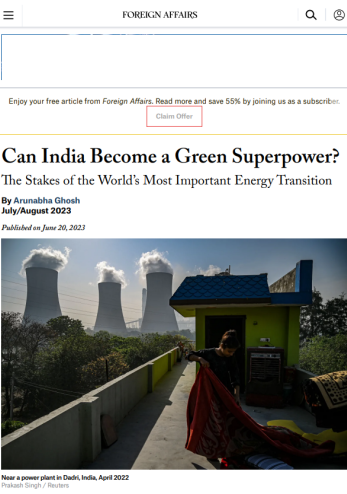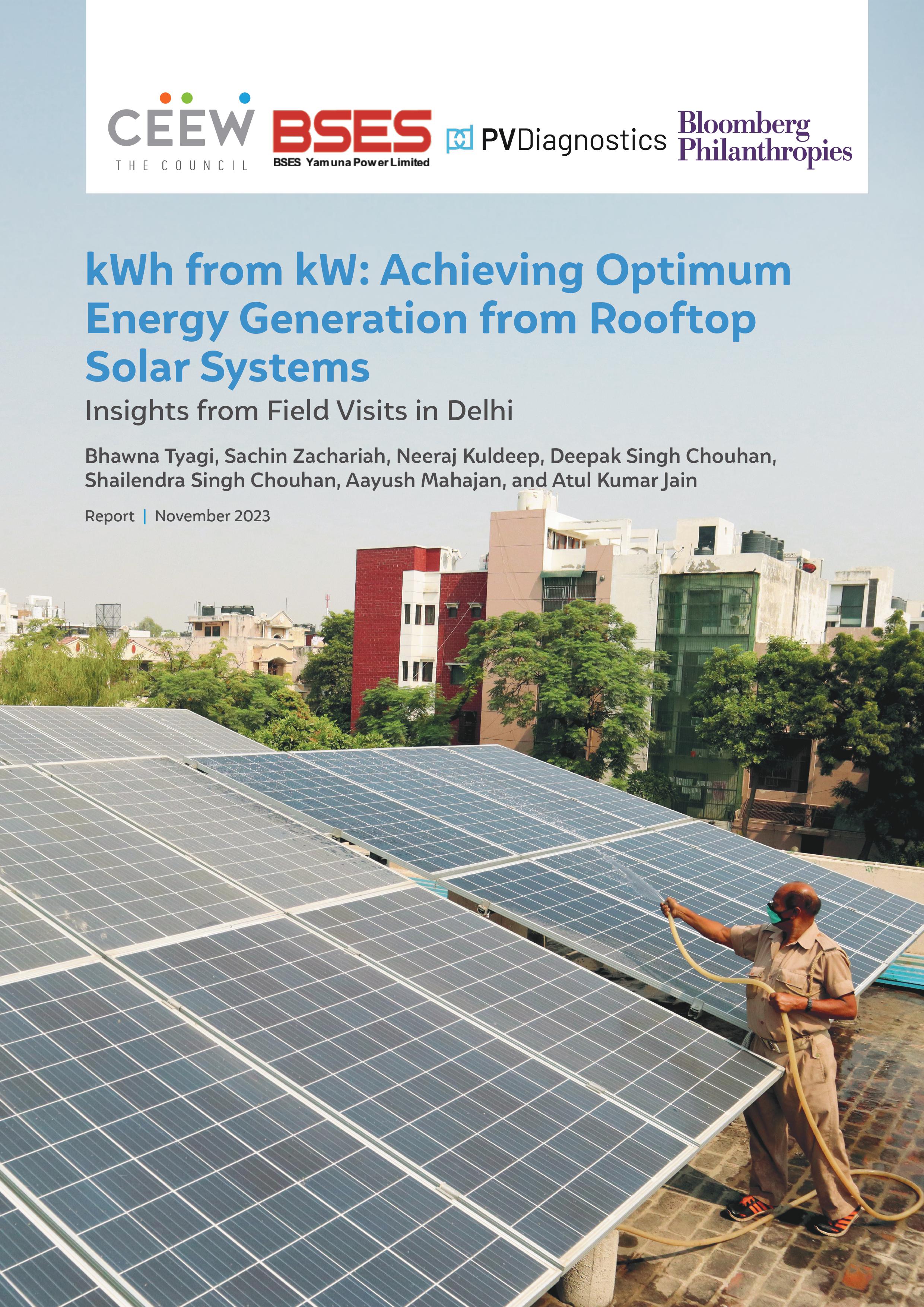



Bhawna Tyagi, Sachin Zachariah, Neeraj Kuldeep, Deepak Singh Chouhan, Shailendra Singh Chouhan, Aayush Mahajan, and Atul Kumar Jain
November 2023 | Energy Transitions
Suggested citation: Tyagi, Bhawna, Sachin Zachariah, Neeraj Kuldeep, Deepak Singh Chouhan, Shailendra Singh Chouhan, Aayush Mahajan, and Atul Kumar Jain. 2023. kWh from kW: Achieving Optimum Energy Generation from Rooftop Solar Systems -Insights from field visits in Delhi. New Delhi: Council on Energy, Environment and Water.
The study examines the performance of the installed grid-connected rooftop solar systems in the BSES Yamuna Private Limited service area. CEEW partnered with BSES Yamuna Private Limited (BYPL) and PV Diagnostics to evaluate the performance of rooftop solar systems. The assessment was carried out using desktop analysis based on generation data, complemented by site visits. The study aimed to evaluate system performance and identify the root causes of underperformance.
Solarising rooftops provides an opportunity to reduce dependence on conventional energy sources. However, poorly maintained solar systems lead to low energy output, increase in the payback period, make the system economically unviable, reduce lifespan, and increase safety concerns. Unsatisfying experience impacts consumer sentiments and can adversely affect the organic growth of the sector in the long run.
The central government subsidy for rooftop solar plant installed by a residential consumer in Delhi is INR 14,588 per kW for installations upto 3 kW.
The maintenance of a solar rooftop system involves routine inspection and servicing and the periodical cleaning of modules. Maintenance also includes the real-time monitoring of equipment condition and plant operations. In addition, there are unscheduled maintenance requirements in the case of equipment failure.
The maintenance of rooftop solar systems is important to optimise the energy yield and maximise the system life. The lack of proper maintenance of solar systems leads to low energy output, increase in payback period, reduces the economic viability of the system, reduces its lifespan, and increases the safety concerns.
The O&M costs are typically 1-2 per cent of the initial system cost annually. Yes, the study finds that ~INR 2 crore (USD 250,000) savings can be realised collectively by residential rooftop solar consumers just by cleaning their systems.

Enabling a Circular Economy in India’s Solar Industry
Akanksha Tyagi, Ajinkya Kale, Neeraj Kuldeep

Community Solar for Advancing Power Sector Reforms and the Net-Zero Goals
Bhawna Tyagi , Neeraj Kuldeep

Mapping India’s Residential Rooftop Solar PotentialA bottom-up assessment using primary data
Sachin Zachariah, Bhawna Tyagi and Neeraj Kuldeep

Promoting the Use of LPG for Household Cooking in Developing Countries
Abhishek Kar, Roshan Wathore, Arunabha Ghosh, Shruti Sharma, Emily Floess, Andrew Grieshop, Rob Bailis, and Nitin Labhasetwar

Can India Become a Green Superpower?The Stakes of the World’s Most Important Energy Transition
Arunabha Ghosh

